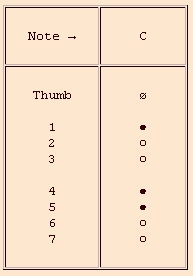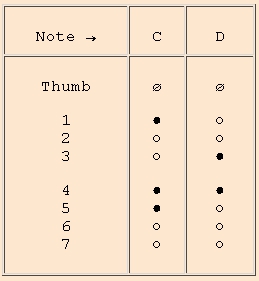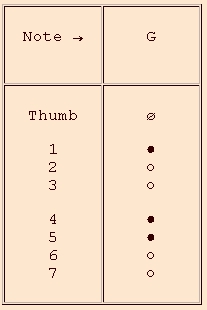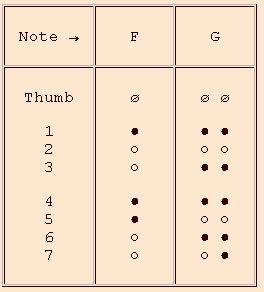PHILIPPE BOLTON, RECORDER MAKER
22 Le Grand Portail,
F-84570 VILLES-SUR-AUZON, France  +33 (0)4 90 61 86 11
+33 (0)4 90 61 86 11  +33 (0)6 22 42 16 78
+33 (0)6 22 42 16 78

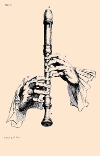
|
COMPARATIVE CHARTS OF SOME
|
VIRDUNG'S RECORDER FINGERINGS
RECORDER IN C (tenor)
FIRST OCTAVE (low notes)
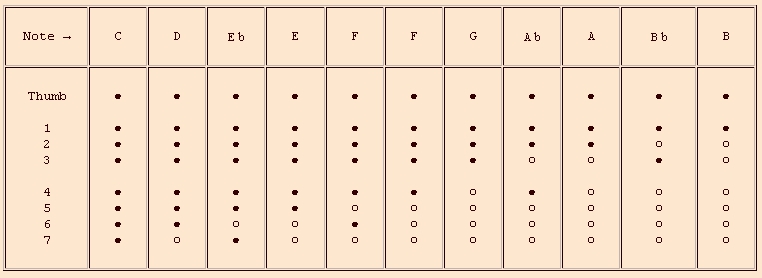
SECOND OCTAVE
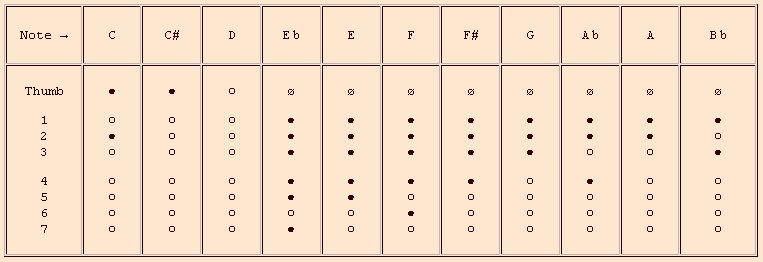
● = closed ○ = open ø = partially closed
This chart published in Basel in 1511 is one of the oldest we know. Together with that of Ganassi, it shows the typical fingerings used on recorders of the first half on the XVIth century.
GANASSI'S NORMAL RECORDER FINGERINGS
RECORDER IN C (tenor)
FIRST OCTAVE (low notes)
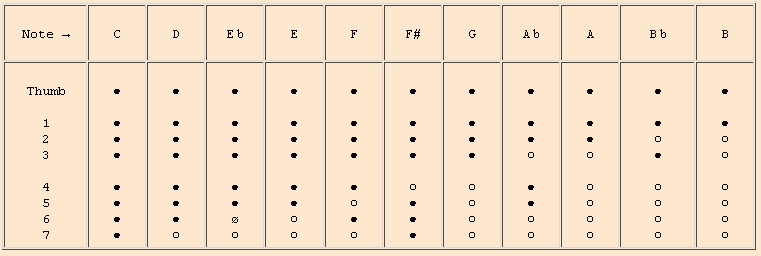
SECOND OCTAVE
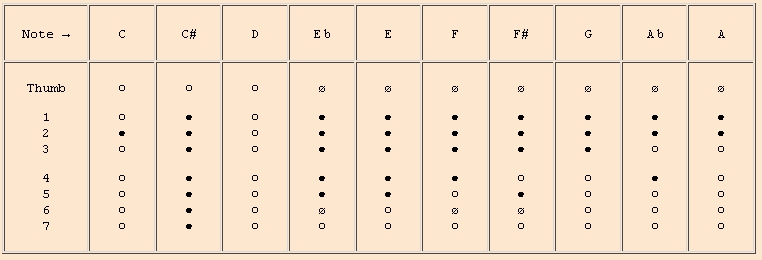
● = closed ○ = open ø = partially closed
Ganassi published several charts of recorder fingerings in 1535, in La Fontegara. Those above are a combination of the six that give the fingerings within the instrument's normal register (one octave and a sixth). Some of them differ from those given by Virdung but are mostly fairly close.
PHILIBERT JAMBE DE FER'S RECORDER FINGERINGS
RECORDER IN C (tenor)

SECOND OCTAVE
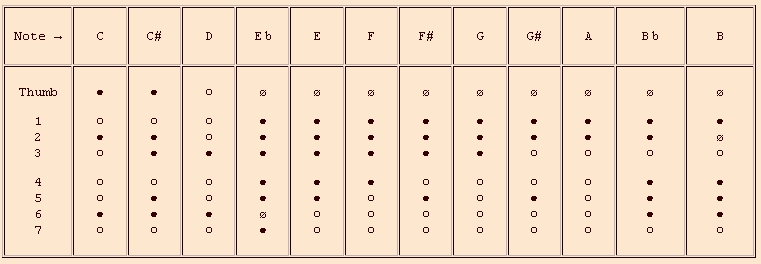
THIRD OCTAVE
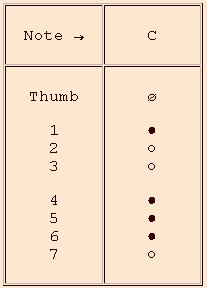
● = closed ○ = open ø = partially closed
Philibert Jambe de Fer's chart, printed in 1556, was the first to indicate the use of the instrument's third register for playing the highest notes. These fingerings are easier to use in virtuoso playing. They also show a range of two octaves, which suggest changes in the design of the recorder. A change in the design of recorders probably made this possible. (For more information see the page on the evolution of bore profiles.)
MERSENNE'S RECORDER FINGERINGS
RECORDER IN C
FIRST OCTAVE (low notes)
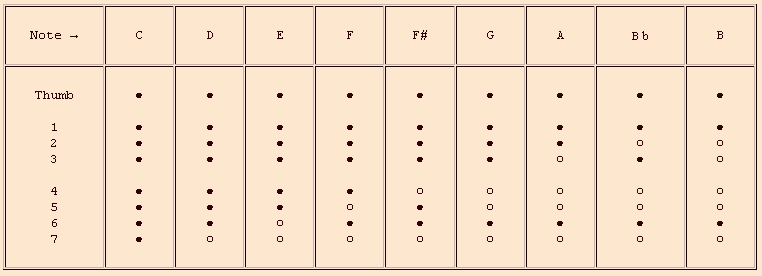
SECOND OCTAVE
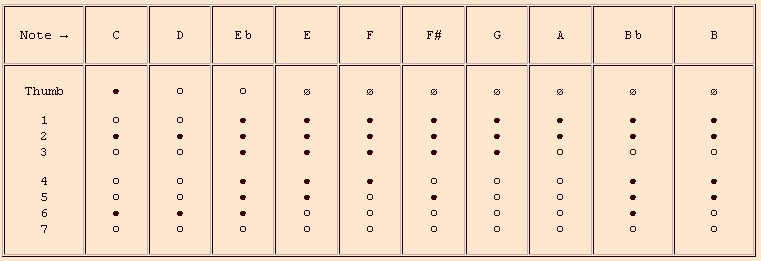
THIRD OCTAVE
|
● = closed ○ = open ø = partially closed
These fingerings were published by Mersenne in 1636 in l'Harmonie Universelle. they cover a range of two octaves. Mersenne confirms that the instrument spans a fifteenth, but adds that some recorders only have a thirteenth,
suggesting that conventional Renaissance recorders were still in use at this time.
For the notes from G1 to D2 hole n° 6 is closed, probably to keep the finger on the instrument as a support. This technique also appears in Hotteterre's charts, but it is not in common use nowadays. |
BLANKENBURGH'S RECORDER FINGERINGS (VAN EYCK)
RECORDER IN C (soprano / descant)
FIRST OCTAVE (low notes)
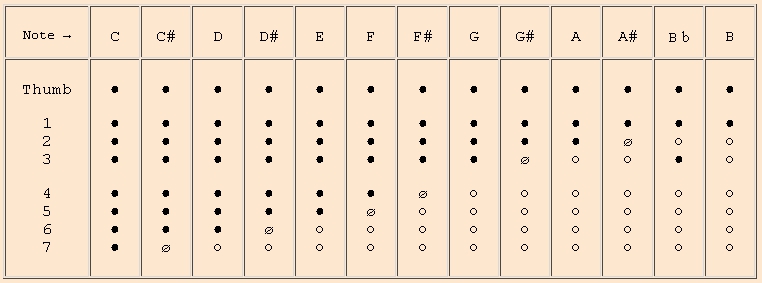
SECOND OCTAVE
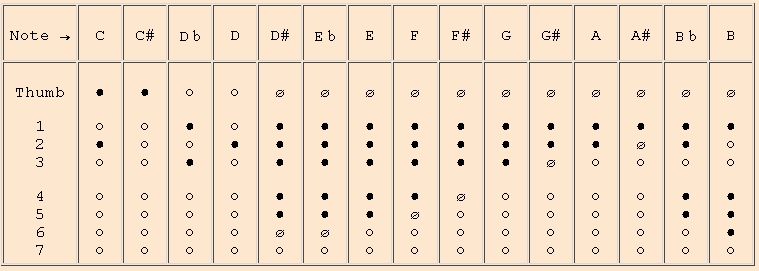
THIRD OCTAVE
|
● = closed ○ = open ø = partially closed This chart contains the fingerings described by Blankenburgh in his text bound with van Eyck's FlUYTEN LUST-HOF. They differ from other 17th century fingering charts by the use of half holes instead of most of the fork fingerings, and by the distinction made between certain sharps and flats. The fingering given for B2 differs from the one in other 17th century charts for this note. It is in fact similar the one given by Ganassi in 1535. |
BISMANTOVA'S FINGERINGS FOR THE RECORDER (1677)
ALTO (TREBLE) RECORDER IN G
FIRST OCTAVE (low notes)
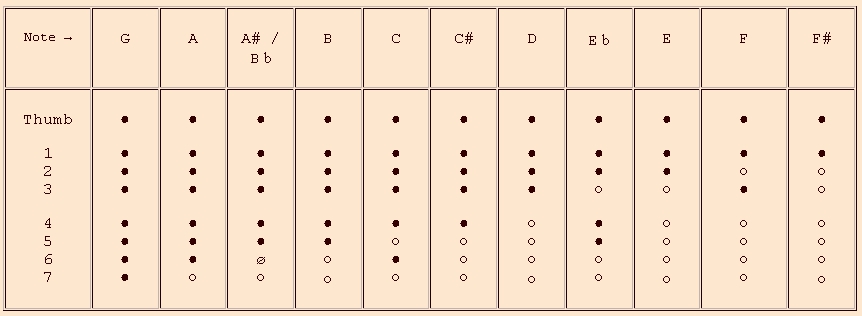
SECOND OCTAVE
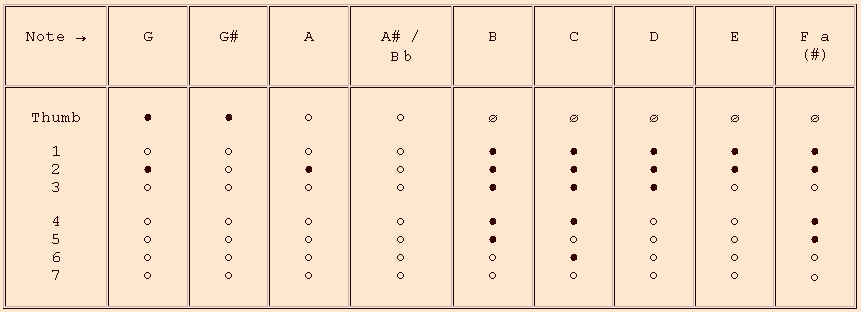
THIRD OCTAVE
|
● = closed ○ = open ø = partially closed Bismantova's chart, which appeared in 1677, was probably the first published for a baroque type of recorder. The accompanying drawing shows the typical three part construction which was to be adopted all over Europe. However it applies to an alto in g, which was probably still the principal solo recorder in Italy at the time, and contains some fingerings normally used on Renaissance instruments. There are a few idiosyncrasies and some sharps and flats are missing in the second octave. The "supporting finger" technique found in Hotteterre's tables is not used here. |
HOTTETERRE FINGERINGS FOR RECORDERS OF THE BAROQUE PERIOD
RECORDER IN F
FIRST OCTAVE (low notes)
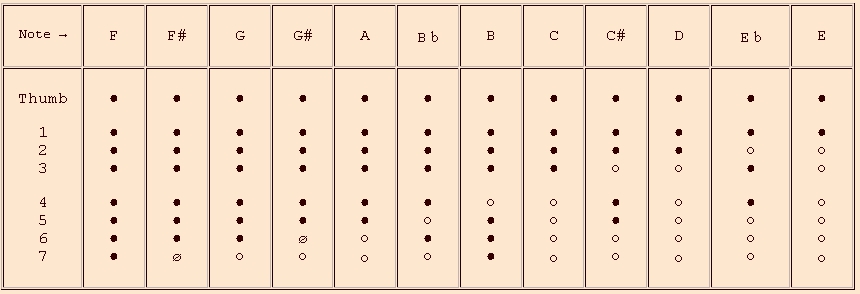
SECOND OCTAVE
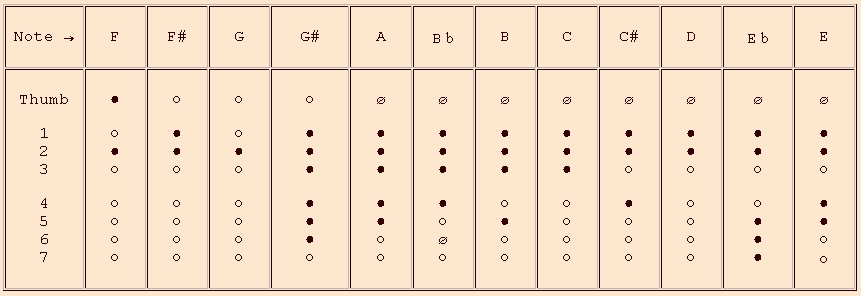
THIRD OCTAVE
|
● = closed ○ = open ø = partially closed Copies of original baroque recorders are sometimes tuned to use these fingerings. Some of them have single holes instead of the double holes that usually equip modern instruments. It can be necessary to look for alternative fingerings for some sharps and flats. Between C1 to G2 Hotteterre suggests closing hole n° 6 to help support the instrument. This technique is not much in use nowadays. |
STANESBY'S FINGERING CHART FOR HIS "TRUE CONCERT FLUTE"
TENOR RECORDER IN C
FIRST OCTAVE (low notes)
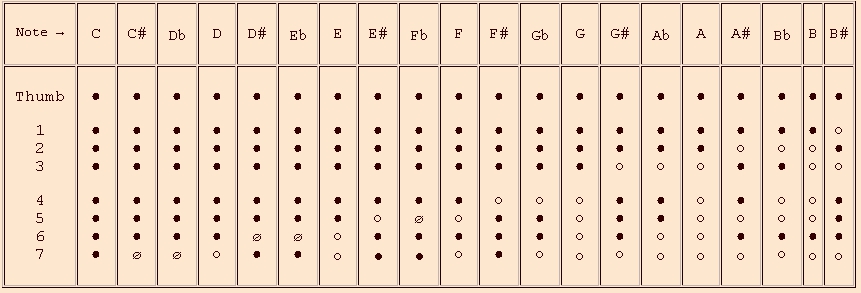
SECOND OCTAVE
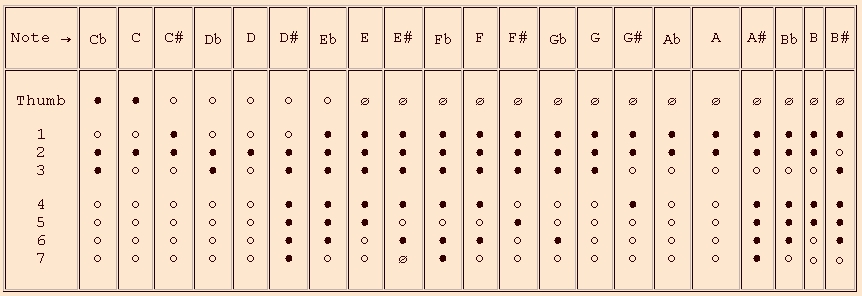
THIRD OCTAVE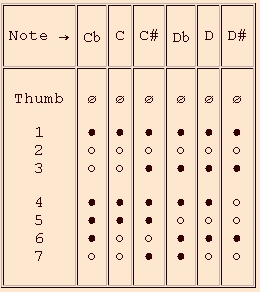
|
● = closed ○ = open ø = partially closed The fingerings given in this chart are those on the last page of Thomas Stanesby Junior's pamphlet on the "True Concert Flute", a special tenor recorder capable of playing together with other woodwind instruments such as the transverse flute and the oboe, and even playing music written for them. It covers a range of over two octaves, and makes a distinction between sharps and the equivalent flats, with a different fingering for each. |
